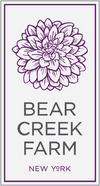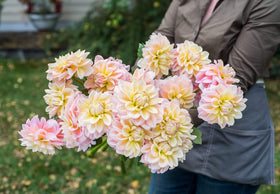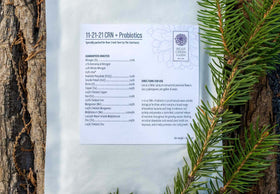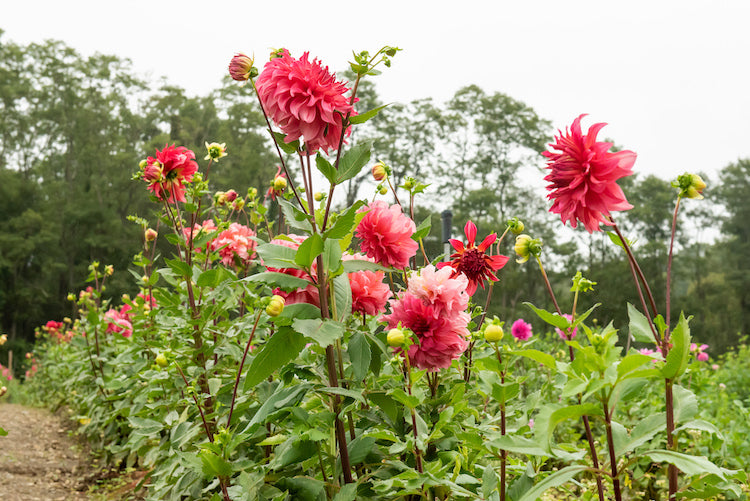This month the groundhog once again saw his shadow indicating another six weeks of winter. This, of course, has us all dreaming of warmer months when the world (always alive – so much happening beneath, even in the depths) is once more, visibly hopping with light play that interweaves increasing hints of warmth. We think of Iceland poppies. We think of tulips. We note the changing quality of the light - becoming gradually long, strong, and less pixilated.
For those of you just now coming into flower gardening or farming – welcome! For those returning, welcome back!
Beginning a flower garden may feel overwhelming, but it need not. How does one begin their first annual flower bed? And what do we mean by annual? If you plant every year, that is an annual garden. Annuals are also a categorization of flowers. These need to be planted every year. In this context, annuals are different than their companion cousin (the perennial) – although each offers its own reward. Speaking for myself, as a not-so-long-ago novice, I am here to tell you that everyone can grow flowers - and in so doing you will feed your own growth mindset and reopen your third eye.

Novice growers as well as those more experienced, have a great deal in common. The distance between these two is far less vast than is imagined. Both groups share that spark of imagination – the ability to be inspired by that which they cannot yet see. In addition, they are willing to risk the precious commodity of time – something people scramble for in a world that seems to turn ever more quickly on its wobbly axis. The need to ground ourselves is increasingly pressing. Even if you have not planted a great deal to date, you are a grower if you feel that familiar stirring – a tug towards the creation of floral beds of beauty.
At Bear Creek Farm, we see flower farming as part and parcel of placing oneself fully in nature and seeing that as an intrinsic reward. Every year, a garden one plans produces a tiny new universe. Crops will vary from year-to-year and conditions well beyond the control of even the most expert gardener defeat us all from time-to-time. Anticipate what you hope will come up, certainly. But so too - look up. Look down. Look around. If your favorite flower does not come up one year, another one will. It may be even nicer. Look up. Look down. Look around. Repeat.
When a flower grower is experimenting with new plantings, it is advisable, of course to follow the seeding instructions. That said, not all flowers will succeed everywhere, and instructions only work in tandem with climate, weather, and, yes, luck. Make selections based on an understanding of the landscape/climate in which you reside – and make choices using personal joy as a yardstick. Often, quite by accident, you will find yourself practicing a regime of self-care – this one requiring a trowel rather than a yoga mat.

- Focus on personal meaning: Select plants that have personal significance, such as a favorite flower or a plant associated with a cherished memory – perhaps something evocative - recalling childhood (when visceral memories are more easily made). Do you remember lavender and the way the bees hung over it? Lavender that, when one takes a sprig and rubs its tiny purple beads on the small of wrist, there is perfume. That.
- Embrace imperfection: Remember a flower garden does not have to be perfect. What some might see as imperfections, we see add character-adds. If some petals on a certain type of flower have been nibbled upon, think of the arrangement you can still create. Place your vase near a window backlit by the sun and see the nibbled petals not as holes, but as windows in a castle of your own making. Defined perfection in nature isn’t real. Nature can be heart stopping in its beauty when it is at its most messy and its least predictable.
- Prioritize enjoyment: We live in a world where specific markers of success are too often a preset rubric. Nature does not play like that - instead offering us the chance to untether ourselves from prescribed notions of beauty. Nature will deliver what it does. Relax into the freedom of seeing what happens. Resist the temptation to plan very specific design choices months out. Nature may well have different ideas, so listen carefully – and give into inspiration. Remember: look up, look down, look around.
- Emphasize sustainability: Consider sustainable practices, such as making best use of the native plants specific to your area. (Native plants are those that grow comparatively more easily than those originating elsewhere.) They tend to be more resistant to pests and are generally more acclimated to weather conditions and, as a result, are more resilient.
-
Create relaxing spaces: When at a nursery, look beyond the flowers. Consider the use of small landscape design elements, such as a bluestone bench set down in or near your garden for quiet reflection. A small birdbath. A wishing stone. Imagine sitting and watching the pollinators. Focus on the enormous bees that seem to hang in the air from some invisible string. Breathe deeply. Be proud of your effort, a task that is easier to accomplish when pre-set definitions of success have been squelched at the outset.

For those who are just beginning and would like some easy-to-grow recommendations, consider these annual varieties. They are gorgeous and simple to maintain. Except for sunflowers, they do well in hanging baskets, as well as in the earth, and can be very decorative. Experts like to return to their roots, with these sublime and satisfying blooms. (Many might say that early success in these varieties staked their confidence and enabled their continued experimentation.)
- Zinnias – These grow in multiple colors and are relatively easy to propagate from seed. They love sun, heat, and well-drained soil. They are unruffled by drought.
- Marigolds – This variety is bright and can be propagated from seed. They are lovers of well-drained soil, heat, and sun. They too, don’t wither easily in a drought.
- Sunflowers – While many people have mixed feeling about sunflowers – the way they take over, they are surprising in dramatic effect. They can be propagated from seed. They are also good at weathering a drought. In addition, spoiler alert: they aren’t all yellow.
- Calendulas – These come in multiple colors and are easy to grow from seeds, which are quite large and easy to handle. They are drought tolerant and can be grown in full sun to partial shade.
- Cosmos – These flowers produce lots of patterns and colors. They grow from seed and prefer full sun. They too are tolerant of heat and drought.
Now that you've finished reading this article, you should check out our tulip planting primer, dahlia growing guide, and cutting guide for dahlias. And if you're shopping for dahlia tubers, make sure to check out our giant dahlia tubers (10"+ blooms), micro dahlia tubers (under 2" blooms), dark pink dahlia tubers, dark red dahlia tubers, and bicolor dahlia tubers.





Great job on your blog. So many new gardeners out there. Perhaps a blog on how to start your first tiny bed for those who have never ever tried and will find success to inspire them! Thanks!